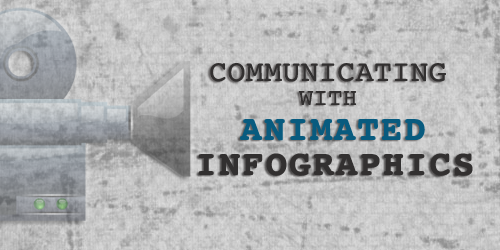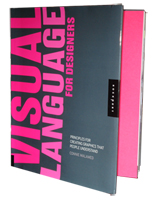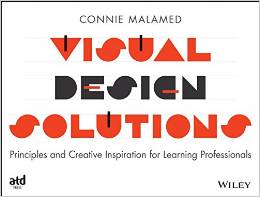
It’s not surprising that the wildly popular infographic genre is producing a surge in animated infographics. As hypnotizing as moving pictures are, it’s good to step back and analyze the medium so we can understand the most effective approaches for communicating through it.
Just like static infographics, the animated versions convey information, data and statistics through a blend of words and images. The advantage, of course, is that infographic videos have the added dimensions of motion and an audio track, allowing for music, voiceovers and sound effects. Let’s look at some examples. Please Note: The videos were chosen for their visual and auditory qualities, rather than their views or promotional messages.
Depicting Statistics
One of the most common uses of infographic videos is to visualize statistics to make them more palatable and meaningful. Three ways to accomplish this are through the use of simple representational graphics, using a storyline and embedding the numbers in a recorded video through post-production work.
1. USING ICONIC GRAPHICS
In the Electronic Medical Records video below, GE Healthcare is promoting the need to establish one EMR standard. They use iconic graphics to depict key concepts, which are often abstract. For example, a tape measure shows the size of the problem, diagonally crossed lines represent red tape and an EMR system is conveyed by a simple dashboard. Using representations from the physical world can help viewers understand important ideas. In addition, notice how this video takes full advantage of the audio track by interjecting sardonic humor—a tone that adds to the absurdity of the current medical record mess in the US.
Electronic Medical Records by GE Healthcare
2. USING A STORYLINE
Another compelling way to make data meaningful is to embed it in a storyline. People are naturally drawn to stories, making it easier to sustain their attention. A narrative also gives the data the context it needs to promote understanding.
In The Clock is Ticking on Long Island video below, the statistics support the dramatic story of a regional community that is on a downward spiral, both economically and environmentally. Although there is no voice over, the music provides the sense of impending doom as does the metaphorical symbol of the time bomb with a clock face ticking away.
The Clock is Ticking on Long Island by Duarte Design
3. POST-PRODUCTION ANIMATION
Then there’s the post-production infographic video, where animated objects, text and infographics are added onto a previously recorded video. This approach provides a way to show data in a familiar physical environment, which is another way to provide meaning and value.
The video below promotes buying and eating local foods in Canada. Notice how the animators used the element of surprise by juxtaposing unexpected objects, like 3D bar graphs rising up from a set table, broccoli arranged into a forest and signs placed directly into food on the table.
Do you know where your food comes from? by the Real Food Movement
Animated Explanations
Another successful use of the animated information graphic is for explaining a process or procedure. Although technical animations have been around for a long time, modern versions use the visual language of videos, such as overlaying windows, novel transitions between segments, a popping soundtrack, lively pace and surprising sound effects. Often the concepts and ideas are pared down to the basics, as they should be when intended for the general public. These are only some techniques used by Dubai animation studio to create viral videos.
1. STOP-MOTION ANIMATION
In this brief explanation of Gmail Mobile, the purpose is to show how the mobile version of Gmail includes the same functionality and data as the desktop version. Using stop-motion animation—where objects appear to be moving on their own—is an excellent way to convey the idea that what’s on the desktop is moved to the mobile device. The upbeat parade soundtrack conveys the feeling that, by gosh, Gmail Mobile must be great.
Gmail Mobile by Jess3
2. ORGANIZING IN SEGMENTS
The Canal Isabel II video below explains Madrid’s water cycle process from collection to purification. Using quick frame changes with matching music, the animators create a speedy tempo that drives it forward. The conceptual framework of the explanation is organized into numbered segments with subtitles, which help with comprehension.
Notice how effectively the data is embedded directly into the landscape or displayed in small windows. This is a good way to show quantitative information while avoiding overwhelm. If this were being produced for a learning experience, users would need controls for easily repeating each segment and possibly more text, in order to retain the information.
Canal Isabel II by binalogue
Please share this article if you like it. And your comments about infographic animations will be loved and appreciated. Add them below.


{ 1 trackback }
{ 7 comments… read them below or add one }
Great inspiring post. I enjoyed seeing every one. I do wonder how effective this is in terms of the learner actually retaining the information – I often found myself so distracted by the coolness of the techniques and images I don’t think I processed the facts very well.
I agree, Simone. I think the purpose of these videos is to communicate a general message or to persuade. If the goal were for information retention of facts and figures, they’d have to be redesigned. Thanks for your comment.
Connie
I agree with Simone. Many animated infos are too fancy to foster real learning (and long time recall) . Their main limitations are:
1. To many details are moving simultaneously.
2. Too fast (doesn’t give the brain time to “glue”.)
3. Using wrong object for explanations
Many animations seems to be created by a creative mind that is concerned about how to show the audience what he/she are able to create.
As Instructional Message Design such “aids” are of limited use.
Per Asplund
Even though I agree with the concerns of the previous writers, these videos are fascinating! I believe that we can find ideas that will transfer to effective training. Both Gagne 9 Learning Events and the ARC model begin with getting the participant’s attention. Videos like those above could be used to introduce a topic. Then the course could go into more detail about the items mentioned in the video. These cutesy videos could also be used to break up long training segments. Equally important, we can mimic isolated animations or graphics to make key points — just don’t bombard the participant with so many clever things that he or she is spinning.
Totally agree with you. Thanks for your comment. There’s an essence here that we can transfer to learning situations too, even if it is just to gain and sustain attention.
I think there’s value in a brief and catchy message. A well crafted message will be memorable, regardless of visual polish. This is particularly true for basic understanding of complex concepts (for a more in-depth understanding of the same concepts, the same strategy might not apply) and in some cases foundational precepts or values.
Here’s an example I rather like:
http://www.crisisofcredit.com/
And another that I think does a great job of illustrating a concept with simple visual elements. I’m not sure that animation would add value. For the sake of argument I’m going to guess that it may have drawn in more viewers, and the addition of an audio narrative may have added slight perceived value for some viewers:
http://www.commoncraft.com/healthcare-reform-explained-dan-roam#
If you’re trying to convey facts… I agree with the comments above. But for conceptual representation, the structure of the message matters. As for the value of animation as a layer… There isn’t a right answer all of the time. Sometimes it adds value for some, others it adds less for others.
This method can be really effective when all you want to do is orient to a concept. Particularly when facts and other procedural documentation are available elsewhere in a reference tool. Here’s an example I built a few months ago. I think it could have been crafted better, but based on the time invested I’m pretty happy with it:
http://www.xpconcept.com/uscg/ows.html
I wouldn’t count animations out. But I would say that the core of the message is most important.
There’s an interesting discussion here on the use of kinetic typography for Scott Berkun’s book teaser:
http://www.scottberkun.com/blog/2009/teaser-video-for-confessions/#comment-590799
I’m not a fan of the execution of the teaser. But the discussion that follows is pretty golden.